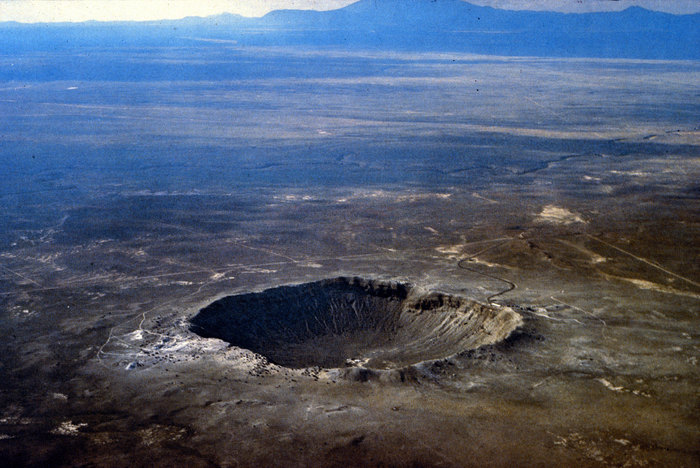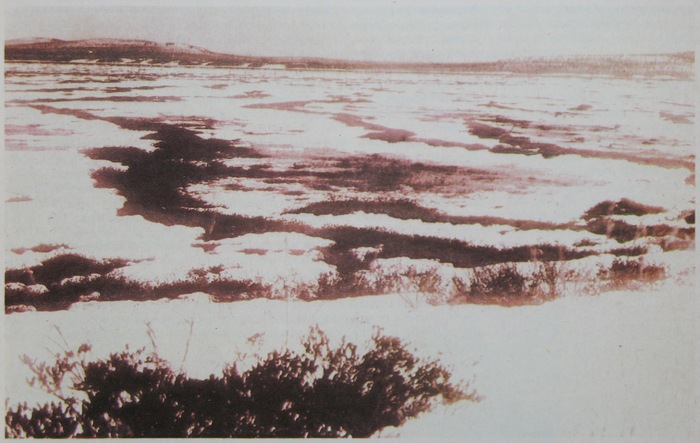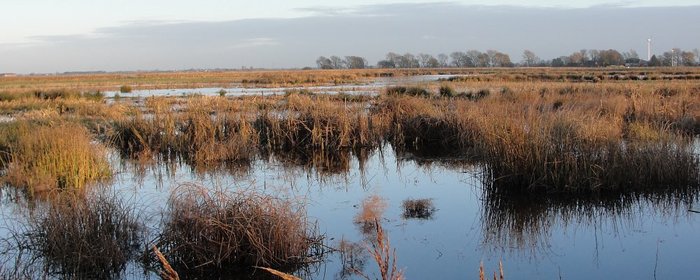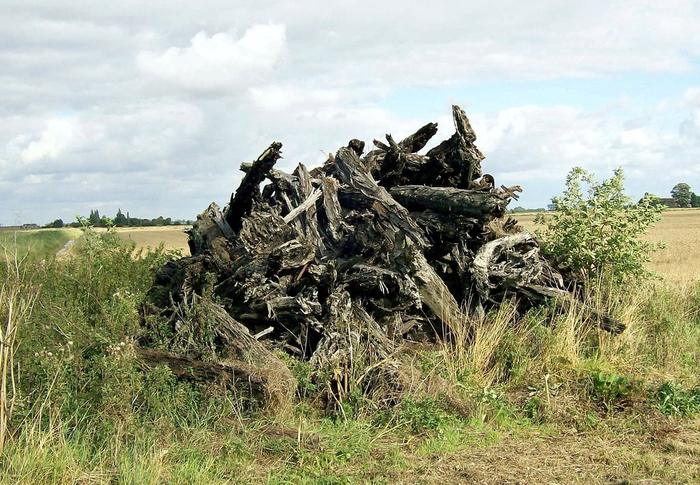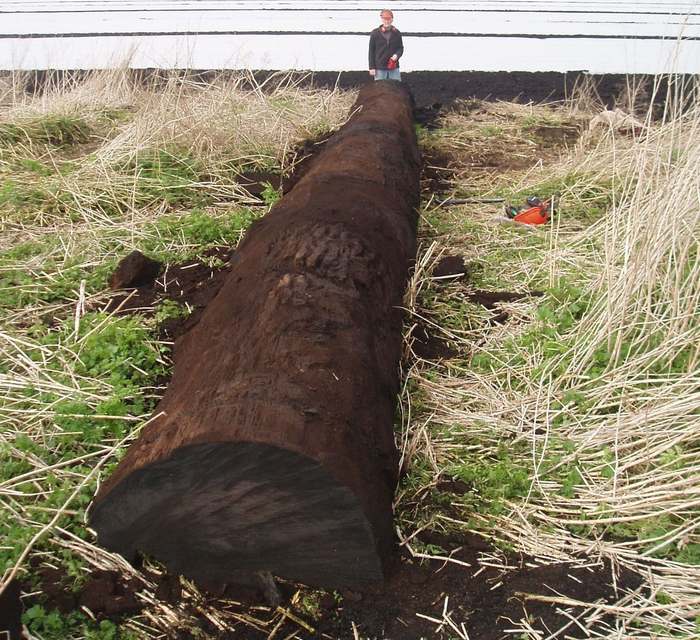Cosmic fingerprints show up where you least expect them. Thu 01 June 2023
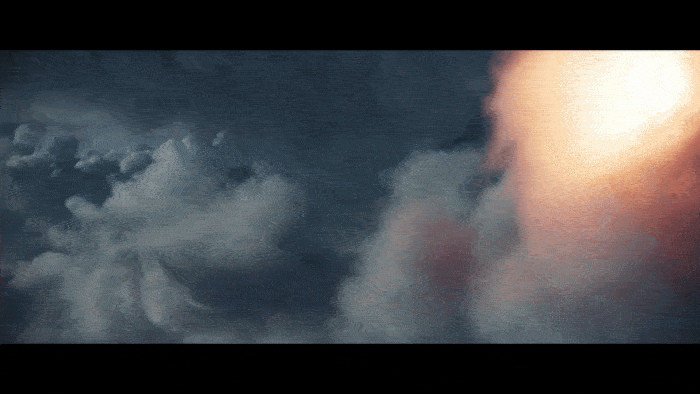
Fire in the sky. Source: Mira
From Fireballs in the Desert, Brighter Than Oppenheimer’s Trinity:
the Tunguska impactor in 1908 released [the equivalent of] 3–5 Megatons of TNT in a fireball blast wave that devastated a vast forest with 80 million trees without generating a crater.
From What Is Known (and Not Known) About the Tunguska Event:
- The explosion occurred about 7:13 AM local time on June 30, 1908.
- It left no impact crater.
- The event flattened some 2,000 square km (500,000 acres) of pine forest.
- Eyewitnesses reported a fireball followed by trembling ground and hot winds strong enough to knock people down.
- Seismographs in western Europe recorded seismic waves from the blast.
Investigators took 20 years to reach the Tunguska impact zone. They found mosquitoes, marshes and fallen trees:
Trees whose roots pointed to Ground Zero. Source: Siberian Explosion: Exploring the Tunguska Mystery | Real Stories Full-Length Documentary
Not well known is that the trunks of the felled trees were roughly the same thickness. You can see it in the video.
This suggests they were the same age. They appear to have germinated at the same time. Based on their tree ring count, they were likely planted around 1850.
Evidence of mass tree planting tends to support Evenki claims that Tunguska was populated. That the airbust killed people living along the Tunguska river.
We leave that mystery to Russian researchers and simply note that the iconic image of the Tunguska event is of felled forest and marsh:
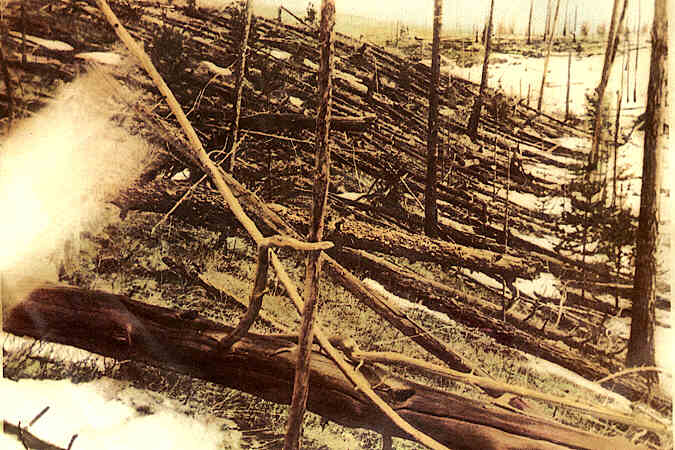
Tunguska's fingerprint: felled forest. Source: Tunguska event - Wikipedia
It's definitely not the distinctive fingerprint of a meteorite impact:
Barringer Crater, Arizona. Source: Meteor Crater - Wikipedia
Tunguska's felled trees are the fingerprint of an air-burst:
Blast wave felled the trees at Tunguska. Source: Meteor Devastation in Siberia: Big Bang in Tunguska | Full Documentary
One Tunguskan fragment may have created Lake Cheko eight miles north west of the airburst's epicentre.
But most of the damage was to plants and water systems. For miles around the epicentre they were flattened, scorched by heat and burned by intense light.
Leaving evidence in strange places:
Tree roots where tree roots shouldn't be. Source: Meteor Devastation in Siberia: Big Bang in Tunguska | Full Documentary
Tunguska's damage was worst in an area of shallow lakes and marsh called the 'Great Hollow':
Frozen marshland at Tunguska's epicentre. Source: Tunguska event - Wikipedia
Where else do we see a landscape like the Great Hollow?
Baston Fen, south Lincolnshire. Source: Re-creating lost wild Fenland
Baston Fen is now preserved as an example of pre-drainage fenland.
Another Fenland characteristic is underground debris. Even though the fenland doesn't have many trees, farmers still dig out bits of trees out of their fields:
Bog oak pile at Dike, near Bourne, Lincolnshire. Source: Bog oaks - Rex Needle
That's from just north of Baston Fen. But they are found beneath all of eastern England's fens.
Farmers dig out complete tree trunks from beneath Siberia's soil:
Siberian bog oak trunks. Source: Bog Oak Expedition 2018/2019
And farmers dig out complete tree trunks from beneath Fenland soil:
A three-trunk haul at Middle Fen Farm, Washingborough, Lincolnshire. Source: Clearing Bog Oaks - The Fens
As in Siberia, tree trunks from beneath Fenland soil are big and straight compared to modern trees:
They don't make them like they used to. Source: Treasure Out of the Bog
This 13m (43ft) long bog oak was found in Wissington Fen in 2012. That's in the Norfolk fens. It's typical of the recovered bog oaks seen in photographs from the 19th and early 20th century.
Despite their alleged thousands of years underground, trees recovered recovered from England's fens come with their own enigmatic hint.
From East Anglian Fens Were Covered in Yew Trees 4,000 Years Ago:
But when we got them back to lab, we were even more surprised: these trees were so well-preserved, it looked as if they were cut down just yesterday.
There is no official claim that an air burst created eastern England's fenlands.
There is, however, plenty of evidence of depopulation and destruction around the region beginning to be reported in the 18th century.
More:
Reconstruction of the Tunguska Event of 1908: Neither an Asteroid, Nor a Comet Core, Vladimir Rubtsov.
Source: TUNGUSKA METEORITE: What’s There Now? What Happened in Tunguska Event?
Source: Tunguska: When the Sky Fell to Earth
Boslough's Tunguska blast simulation. Source: Meteor Devastation in Siberia: Big Bang in Tunguska | Full Documentary
which was clipped from:
Source: Meteor Devastation in Siberia: Big Bang in Tunguska | Full Documentary
© All rights reserved. The original author retains ownership and rights.
More of this investigation:
On The Level About Lincolnshire,
More of this investigation:
The Reformation was a Reformatting
More by tag:
#geology
